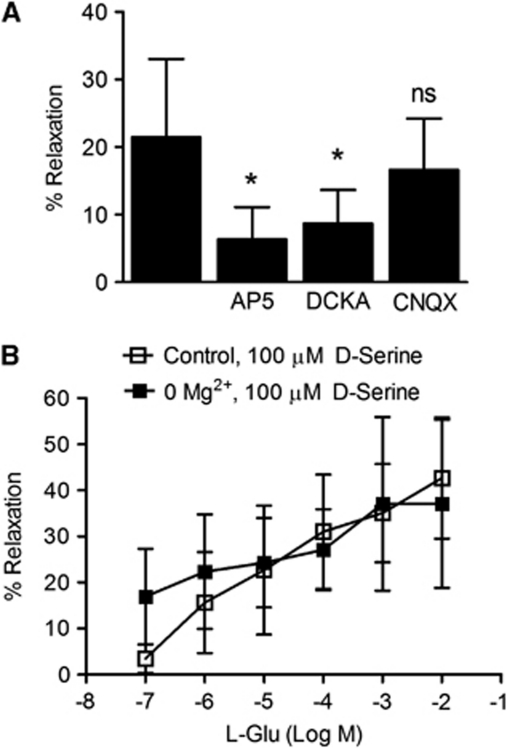Figure 3.
N-methyl--aspartate (NMDA) receptors mediate vasodilation in response to glutamate and -serine. (A) Treatment of middle cerebral arteries (MCAs) with glutamate and -serine together (both 100 μmol/L) caused a significant increase in lumen diameter. NMDA receptor antagonists, AP5 (-2-amino-5-phosphonopentanoate; 100 nmol/L) and DCKA (5,7-dichlorokynurenic acid; 300 nmol/L) attenuated vasodilation (n=6). 6-Cyano-7-nitroquinoxaline-2,3-dione (CNQX), an α-amino-3-hydroxy-5-methyl-4-isoxazolepropionic acid (AMPA)/kainate receptor antagonist, did not significantly inhibit vasodilation up to 20 μmol/L (n=6). Data are presented as mean±s.d.; *P<0.05 compared with glutamate/-serine control using one-way analysis of variance (ANOVA) with Newman–Keuls post-hoc test. (B) No significant differences in vasodilatory response to incremental glutamate in the presence of -serine (100 μmol/L) were detected between control arteries and arteries incubated in Mg2+-free buffer. Data are presented as mean±s.d. and were analyzed using two-way ANOVA for repeated measures and Bonferroni post-hoc test.

